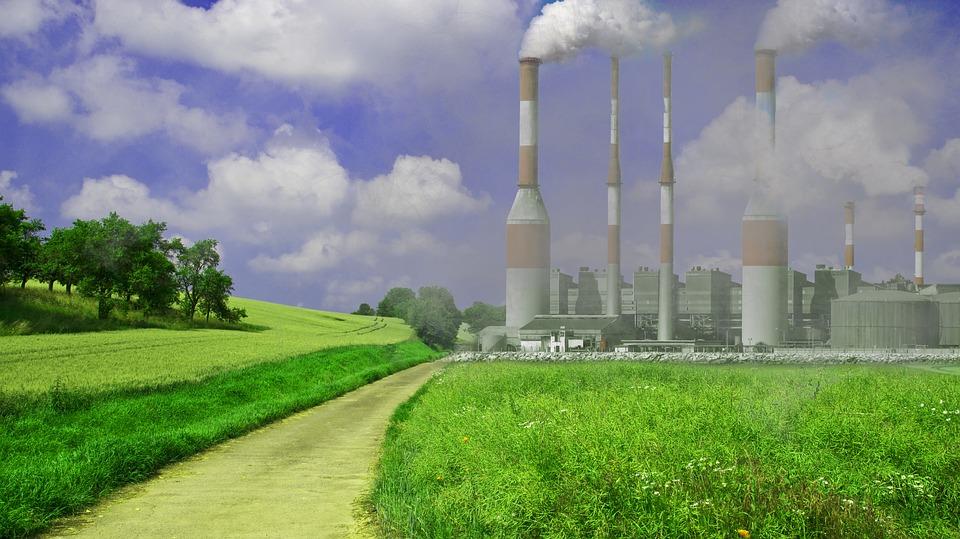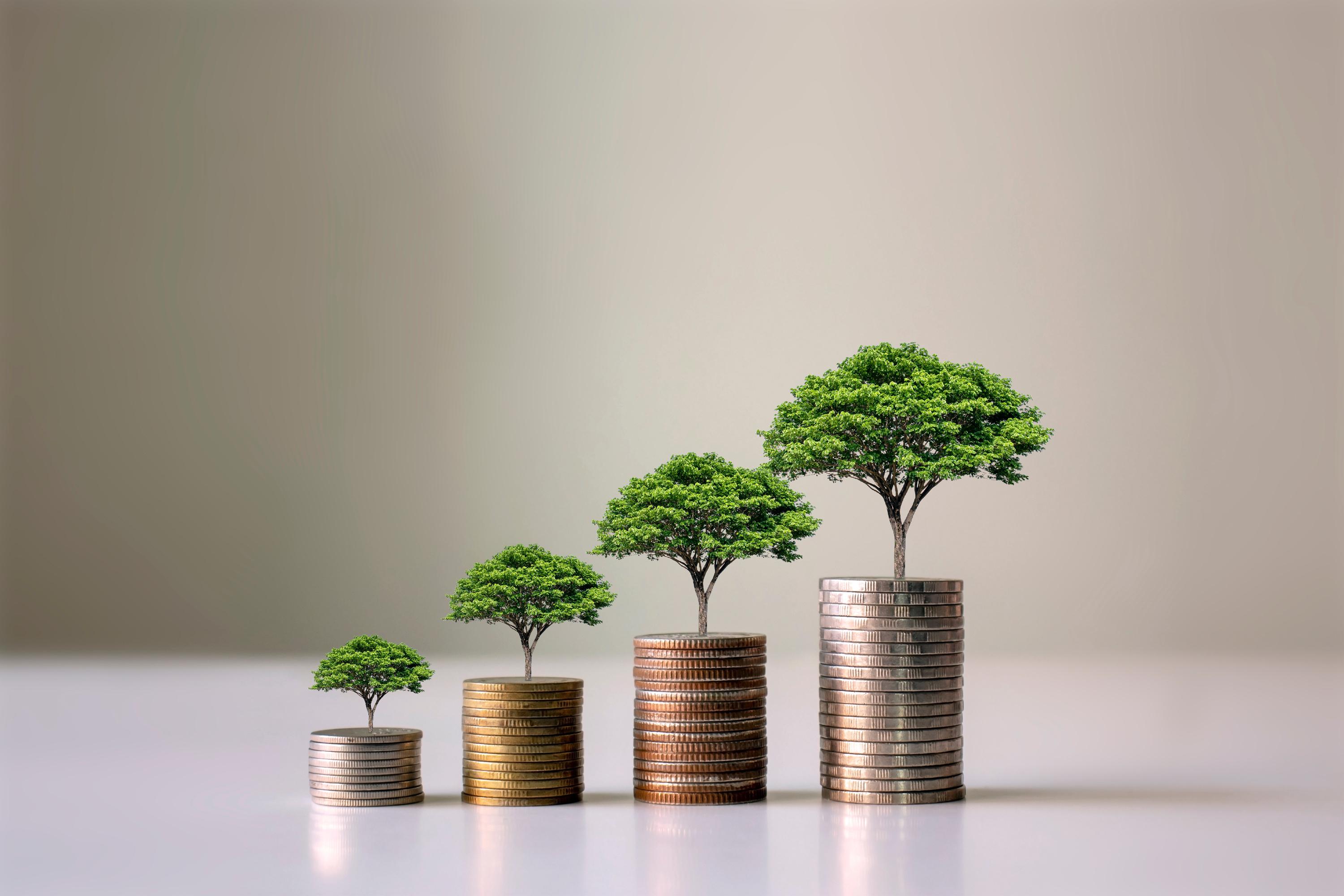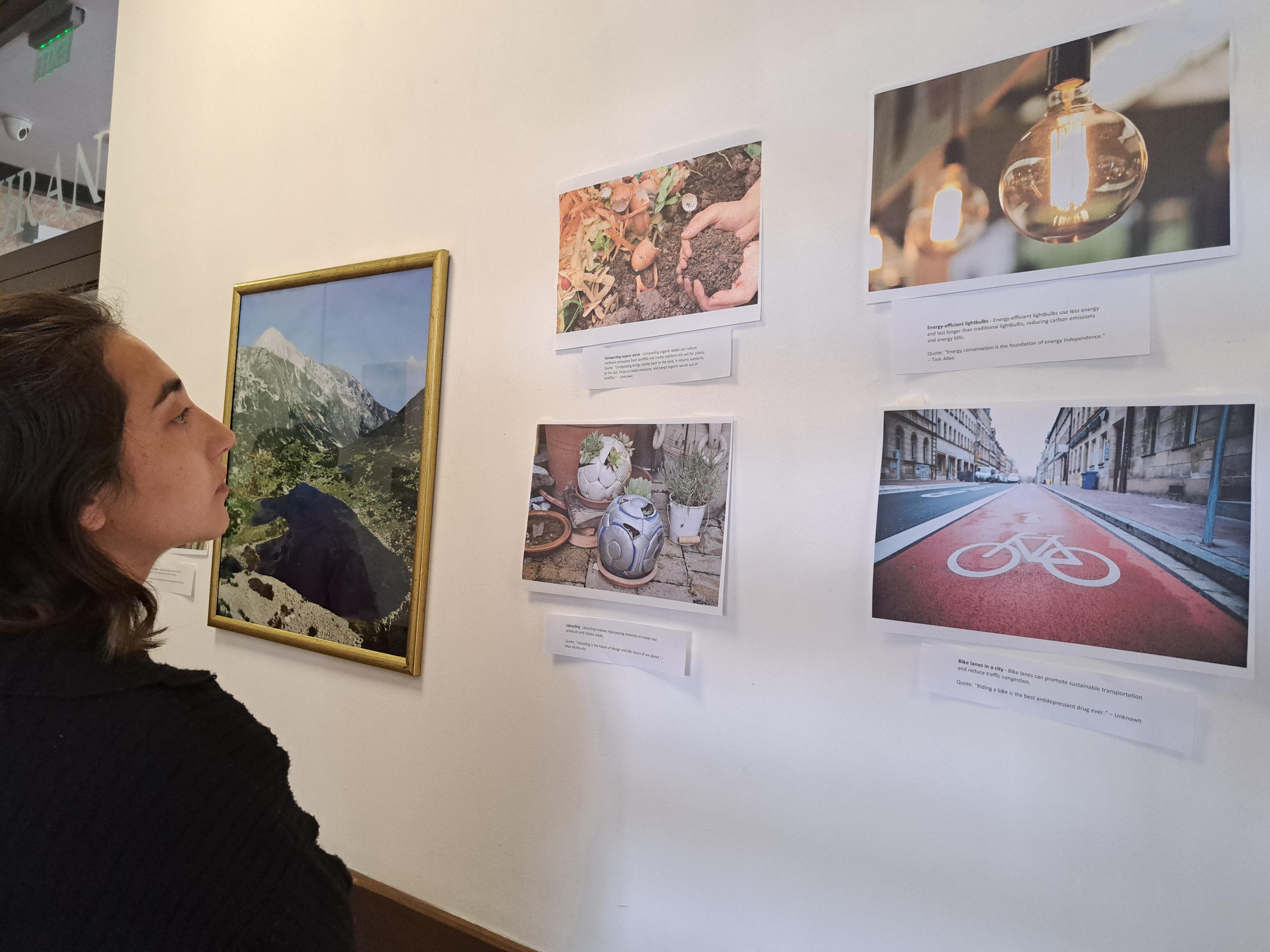TRAINING MANUAL "Climate Ambassadors 4 Youth Work"



This manual was created as an outcome of a training course, which took place in Bansko from 1-9 May, 2023.
The training course was focused on the topic of Climate Change, Climate Justice and the impacts of them in humanity and economy.
The host organisation was PROVision International, from Bulgaria
I am honored to introduce this manual on climate change education, which is the culmination of a week-long training course that brought together passionate youth workers from different parts of Europe. It is an impressive achievement to have compiled all the experiences, ideas, and best practices that we have shared during this intensive week into a single, accessible document. This manual is designed to provide practical guidance and innovative approaches for incorporating climate change education into youth work. With its emphasis on interactive learning, creative expression, and community engagement, it is an essential tool for anyone who wants to empower young people to take action on climate change. Through this manual, we hope to inspire and support fellow youth workers in their efforts to build a sustainable future. By working together and sharing our knowledge, we can make a real difference in the fight against climate change.
I want to extend my sincerest gratitude to all the participants for their hard work in creating this manual, which has contributed to the success of the project. Thank you for your valuable input and commitment to the cause.
Best regards,
Aleksandar JevtimovHow does climate change affect our planet and what can we do to help?
Climate change means that planet's temperature is rising, which is having as impact the melting of ice and so the rise of the sea level. These results are disturbing whole ecosystems and generally the whole world. We can use more renewable energy sources so not to harm the planet more.

How can we work together to raise awareness about climate change and motivate others to take action?
People should be more sensitive and informed about climate change, that's why we should do some radical actions as a whole.
The term "climate change" is often used interchangeably with "global warming," but while global warming refers specifically to the long-term increase in the Earth's average surface temperature, climate change encompasses a broader range of effects, including changes in precipitation patterns, ocean acidity, sea level, and extreme weather events. Climate change is one of the most significant and pressing challenges facing the world today, with potentially severe consequences for the environment, economies, and human societies.
Climate change is caused by a variety of factors, both natural and human-induced. The most significant cause of climate change in recent decades is the increase in greenhouse gases (GHGs) in the Earth's atmosphere, which trap heat from the sun and cause a warming effect known as the greenhouse effect. The primary sources of these gases are the burning of fossil fuels for energy and transportation, deforestation, and landuse changes. Other human activities that contribute to climate change include industrial processes, agriculture, and waste management.

The effects of climate change are far-reaching and can be observed in many parts of the world. The most notable effects include: Rising temperatures: Global temperatures have risen by about 1°C since pre-industrial times, with further increases expected in the future. This warming is causing changes in weather patterns, such as more frequent heatwaves and droughts.
Melting ice: The melting of glaciers and ice sheets is contributing to rising sea levels, which pose a significant threat to coastal communities and low-lying areas.
Changes in precipitation patterns: Climate change is causing more extreme precipitation events, such as heavy rain and flooding, in some areas, while other regions are experiencing more prolonged periods of drought.
Ocean acidification: As the concentration of carbon dioxide in the atmosphere increases, more of it is absorbed by the oceans, causing the pH of seawater to decrease and become more acidic. This can harm marine ecosystems and the organisms that depend on them.
Biodiversity loss: Climate change is causing shifts in ecosystems and altering the timing of seasonal events, such as the timing of plant flowering, which can disrupt the delicate balance of ecosystems and lead to biodiversity loss.
Increased frequency of extreme weather events: Climate change is contributing to more frequent and severe weather events, such as hurricanes, cyclones, and wildfires, which can have devastating consequences for human communities and infrastructure. These effects are just a few examples of the complex and far-reaching impacts of climate change. It is clear that urgent action is needed to address this pressing global challenge.
- Climate Change and Global Inequality
Climate change and global inequality are interconnected. The impacts of climate change disproportionately affect vulnerable populations, exacerbating existing inequalities. Poor communities lack resources to adapt to climate change, and may become dependent on technology transfers and foreign aid, perpetuating the cycle of global inequality. Climate change can lead to increased migration and displacement, further marginalizing vulnerable communities. Addressing global inequality is essential for building resilience to climate change impacts and ensuring a just transition to a sustainable future.
- The Role of Social Justice in Addressing Climate Change Social justice is crucial for addressing climate change. It ensures fairness and equity in the distribution of costs and benefits of climate action, promotes inclusive decisionmaking, recognizes human rights, and addresses intersectional inequalities. Communityled solutions prioritize local knowledge and empowerment. Incorporating social justice principles into climate policies and programs can help build a just and sustainable future for all.
1. What does "sustainability" mean to you, and why is it important?
Sustainability is a healthier lifestyle, which we should all embody in our daily routine. It is the only way to make our lives more friendly to the environment and minimize climate crisis

2. What small changes can we make in our daily lives to help the environment? Reduce plastic use, use recycled paper, support circular economy
3. How can we help ensure that future generations have access to clean air, water, and resources make our best try to stop water/air/environment pollution, minimize glace melting and protect biodiversity
The Impact of Climate Change on the Sustainable Development Goals:
Climate change has a significant impact on the Sustainable Development Goals (SDGs) adopted by thE United Nations in 2015. The SDGs provide a framework for addressing poverty, inequality, and environmental sustainability, among other issues. Climate change affects the progress towards achieving these goals, both directly and indirectly.
Here are some ways in which climate change impacts the SDGs:
Poverty and inequality: Climate change can worsen poverty and inequality by affecting food security, access to water and sanitation, and livelihoods. Poor and marginalized communities are often the most vulnerable to the impacts of climate change. Health: Climate change can negatively impact human health by increasing the incidence of infectious diseases, exacerbating respiratory illnesses, and increasing the prevalence of malnutrition.
Education: Climate change can disrupt educational opportunities, as extreme weather events can cause school closures and displace students. Infrastructure: Climate change can damage infrastructure, such as roads, bridges, and buildings, which can affect economic development and access to essential services.
Biodiversity: Climate change can affect biodiversity and ecosystems, leading to the loss of ecosystem services, such as pollination, water purification, and climate regulation.

Sustainable development plays a critical role in combating climate change. Climate change and unsustainable development are two interrelated challenges facing the world today, and addressing one requires addressing the other. Here are some ways in which sustainable development can help combat climate change:
Reducing greenhouse gas emissions: Sustainable development can help reduce greenhouse gas emissions by promoting low-carbon energy systems, energy efficiency, and sustainable transportation.
Building resilience: Sustainable development can help build resilience to the impacts of climate change by promoting ecosystem restoration and protection, sustainable land use practices, and disaster risk reduction.
Ensuring equitable development: Sustainable development can help ensure that development is equitable and benefits all members of society, reducing the risk of social and environmental conflicts and promoting social stability.
Encouraging innovation: Sustainable development can encourage innovation and the adoption of new technologies, including those related to renewable energy, energy efficiency, and sustainable agriculture.
Mobilizing finance: Sustainable development can mobilize finance for climate action by promoting sustainable investment and financial instruments, such as green bonds.
- The Economic Impact of Climate Change Climate change has significant economic impacts, both in the short and long term. Here are some ways in which climate change affects the economy:
Damage to infrastructure and property: Extreme weather events, such as floods, storms, and wildfires, can damage infrastructure, property, and homes, leading to significant economic losses.
Agricultural impacts: Changes in temperature and precipitation patterns can affect crop yields and livestock production, leading to food scarcity and increased food prices.
Health impacts: Climate change can increase the incidence of diseases, such as malaria, dengue fever, and Lyme disease, which can increase healthcare costs and reduce workforce productivity.
Energy sector impacts: Climate change can affect energy production and consumption, leading to higher energy prices, increased demand for cooling and heating, and reduced energy security.
Displacement of people: Climate change can lead to the displacement of people, both internally and across borders, leading to social and economic costs associated with migration and resettlement.
Impacts on tourism: Climate change can affect tourism, as extreme weather events and changes in temperature and precipitation patterns can affect the attractiveness of tourist destinations and lead to reduced tourism revenues.

Sustainable solutions for economic growth are essential for building a resilient and prosperous future. Here are some examples of sustainable solutions for economic growth:
Investment in renewable energy: Shifting towards renewable energy sources, such as wind, solar, and geothermal, can provide sustainable economic growth while reducing greenhouse gas emissions.
Green infrastructure investment: Investing in green infrastructure, such as public transportation, energy-efficient buildings, and green spaces, can provide economic benefits while reducing environmental impacts.
Sustainable agriculture practices: Adopting sustainable agriculture practices, such as conservation tillage, crop rotation, and agroforestry, can enhance soil health, increase crop yields, and support rural communities.
Creating effective climate campaigns requires careful planning, creativity, and a deep understanding of the target audience. Here are some key steps to create effective climate campaigns:
Define your goals and audience: Start by defining your campaign goals and target audience. This will help you tailor your message and choose the most effective communication channels.
Craft a compelling message: Develop a clear, concise, and compelling message that resonates with your target audience. Use data and personal stories to make the issue real and tangible. Choose the right communication channels: Choose the communication channels that are most effective for reaching your target audience, such as social media, email, websites, or traditional media.
Engage with influencers: Identify influencers who are trusted and respected by your target audience and collaborate with them to amplify your message.
Use visuals and storytelling: Use visuals, such as infographics, videos, and photos, to help communicate your message and make it more engaging. Use storytelling techniques to make your message relatable and memorable.
Provide actionable steps: Offer actionable steps that your audience can take to make a difference, such as reducing their carbon footprint, contacting their elected officials, or supporting climate-friendly businesses.
Measure and evaluate your impact: Use metrics to measure the impact of your campaign and evaluate its effectiveness. Use this data to refine your approach and improve future campaigns.

Running a successful climate campaign requires careful planning, execution, and evaluation. Here are some key steps to run a successful climate campaign:
Build a strong team: Assemble a team with diverse skills and experiences who share your passion for climate action.
Develop a clear strategy: Develop a clear strategy that outlines your goals, target audience, messaging, tactics, and evaluation methods. Mobilize your supporters: Mobilize your supporters by engaging with them through social media, email, or events, and providing them with tools and resources to help spread the word. Use a variety of tactics: Use a variety of tactics to reach your target audience, such as social media, events, videos, petitions, and partnerships. Collaborate with partners: Collaborate with partners, such as non-profits, businesses, or government agencies, to amplify your message and increase your impact. Measure your impact: Use metrics to measure the impact of your campaign, such as the number of people reached, engagement rates, and policy changes. Adapt and evolve: Continuously adapt and evolve your campaign based on the results and feedback you receive, and refine your approach to maximize impact.
How do you plan to engage and collaborate with different stakeholders and communities to ensure the success and sustainability of this project?
Engaging and collaborating with different stakeholders and communities is essential for the success and sustainability of any project, especially one focused on climate change. Here are some steps an NGO can take to plan for engagement and collaboration:
-Identify key stakeholders: Identify all the key stakeholders who may have an interest in the project, such as government agencies, private businesses, civil society organizations, academic institutions, and community groups.
-Assess their interests and needs: Once stakeholders are identified, assess their interests and needs. What are their goals and objectives? What resources can they contribute? What are their concerns or objections to the project? Develop a stakeholder engagement plan.
-Develop a plan that outlines how the NGO will engage and collaborate with each stakeholder, taking into account their interests and needs. This could include activities such as consultation meetings, workshops, surveys, and focus groups.
Local action on climate change is critical for several reasons:
Local impacts: Climate change is already causing significant impacts at the local level, such as more frequent and severe heatwaves, droughts, floods, and storms. Local action can help communities prepare for and adapt to these impacts.
Emissions reduction: Local action can help reduce greenhouse gas emissions by promoting energy efficiency, renewable energy, public transportation, and other sustainable practices.
Leadership: Local governments, businesses, and civil society organizations can show leadership by taking action on climate change, inspiring others to follow suit and catalyzing broader action.

Health and well-being: Local action can improve public health and well-being by reducing air pollution, promoting active transportation, and increasing access to green spaces.

Economic benefits: Local action can stimulate economic growth and create green jobs by promoting energy efficiency, renewable energy, and sustainable transportation.
Resilience: Local action can improve the resilience of communities to climate-related shocks and stresses, such as extreme weather events, by strengthening infrastructure, promoting biodiversity, and reducing vulnerability.
Implementing climate change initiatives locally can be an effective way to make a positive impact on the environment and the community. Here are some steps that can be taken to implement climate change initiatives at the local level:

Assess the local climate change risks: The first step is to identify the local climate change risks and vulnerabilities. This could include the impacts of extreme weather events, sea level rise, or other climate-related risks.
Develop a climate action plan: Based on the assessment of climate change risks, a climate action plan should be developed that outlines specific actions to reduce greenhouse gas emissions and adapt to the impacts of climate change. The plan should be tailored to the local context and involve stakeholders from the community.
Engage the community: Engage the community in the planning process to build support and ensure that the initiatives are relevant to local needs and priorities. This could include holding public meetings, workshops, and other outreach activities.
Implement the initiatives: Implement the initiatives outlined in the climate action plan. This could include measures to reduce energy use, promote renewable energy, increase public transportation, and improve waste management. The initiatives should be designed to achieve measurable results and should be regularly monitored and evaluated.
Collaborate with other organizations: Collaborate with other local organizations, such as businesses, universities, and non-profits, to leverage their expertise and resources. This can help to expand the reach and impact of the initiatives and create synergies.
Monitor and report progress: Monitor and report on the progress of the initiatives to ensure that they are on track and to communicate the results to the community. This can help to build momentum and support for ongoing climate change initiatives.
By taking these steps, local communities can implement climate change initiatives that make a difference, both locally and globally, and help to create a more sustainable future for all.
Greenhouse gases: These are gases that trap heat in the Earth's atmosphere, leading to an increase in global temperatures. The most common greenhouse gases are carbon dioxide, methane, and nitrous oxide.

Global warming: This refers to the long-term increase in the Earth's average surface temperature, primarily due to the buildup of greenhouse gases in the atmosphere.
Climate mitigation: This refers to efforts to reduce greenhouse gas emissions in order to prevent or slow down the impacts of climate change.
Climate adaptation: This refers to efforts to prepare for and respond to the impacts of climate change that are already happening or are expected to happen in the future.
Carbon footprint: This is the total amount of greenhouse gases emitted by an individual, organization, or activity.
Climate resilience: This refers to the ability of a system, such as a community or ecosystem, to adapt to and recover from the impacts of climate change.
Renewable energy: This is energy that comes from sources that are replenished naturally and sustainably, such as solar, wind, hydro, and geothermal power.
Climate justice: This is the idea that the impacts of climate change are not distributed equally, and that those who have contributed least to the problem are often the most affected. Climate justice seeks to ensure that everyone has access to a healthy environment and a sustainable future.
Name of activity: Origami
Description: Get to know each other.
You ask a person a number, and then he/she answers the question of the number asked.
Personal questions to strengthen the connection between people of the group.
Materials used: Printed papers
Number of participants: 18, individual
Name of activity: City Game

Description: Participants had to go to the city center of Bansko and answer the questions made for each group. Questions were about the following topics:

Ask local people about what Erasmus + is. Take photos and videos with locals. Sing Bulgarian songs. Find out the best restaurant
Take a photo with the Fountains. Etc.
Materials used: Smartphone for the videos and photos. List of questions in a document.
Number of participants: Teams of 4.
Name of activity: Domino Board Game
Description: Climate Change Dominoes is a game that explores the connections between different causes and effects of climate change. In this game, two teams will compete against each other to match dominoes with the corresponding cause or effect, aiming to be the first team to use all their dominoes.
Materials used: Climate change dominoes (30 cards in total: 15 with causes and 15 with effects)
Number of participants: 2 teams

Name of activity: Climate justice board game

Description: Climate Justice vs Climate
Injustice is a board game designed to help players understand the challenges of addressing climate change and the importance of working together to achieve a sustainable future. The game is played between two teams, the Climate Justice Team and the Climate Injustice Team, each with 12 spaces to move across the board. The team that reaches the end of the board first wins the game.
Materials used: Papers with numbers used as 12 spaces
Number of participants: 2 teams, 9 people each
Name of activity: World cafe

Description: 4 tables with 1 question in each. There are 4 teams and each group has five minutes to discuss each one before moving onto the next station.
Materials used: Papers and questions
Number of participants: 4 teams (depending on the number of participants)
Name of activity: SDGs scenarios
Description: Each team will receive a specific SDG scenario to work on 15 minutes to discuss and come up with specific actions you can take to help achieve your assigned SDG.
Each team has 5 minutes to present your action plan to the rest of the participants. After each presentation, there will be a 2-minute Q&A session where other participants can ask questions about the presented action plan.
Materials used: Pen and paper
Number of participants: 4,5 each team
Name of activity: Economy vs Climate change

Description: Each team represents a company and discusses how they affect climate change and how it helps them economically and how climate change affects them
Materials used: Pen and postits
Number of participants: 4 each team
Name of activity: Climate sector impact
Description: The Climate Change Impact workshop is designed to help participants understand the impacts of climate change on different aspects of youth work. Participants are divided into small groups and assigned a specific sector such as eco-friendly practices, sustainable consumption, connecting with nature, or creating green spaces. Each group will research and present the impacts of climate change on their assigned sector and come up with concrete actions that can be taken to address the issue.
Materials used: Canva, PowerPoint
Number of participants: 4,5 each team
Name of activity: Mitigation: Gallery Walk: Taking Action for a Sustainable Future
Description: - Gallery walk: participants walk around the gallery, look at the photos, and read descriptions.
- Each team selects one topic from the gallery that they think they can address in their local community.
- Each team develops a real solution in their community to assess the issue.
Materials used: Photos of different sustainable actions

Sticky notes
Canvas, Powerpoint
Number of participants: National teams
Name of activity: Campaigns (part 1)
Description: Assessing different air pollution solutions.
Each team had differents tasks about data education and awareness, technology and inn

Materials used: Canva, Powerpoint
Number of participants: 4,5 each team
Name of activity: Campaigns (part 2)
Description: Assessing a relevant issue of each participant's country related to climate change. Each team had to develop a campaign plan to solve the issue. They had to go through different campaign steps:

Campaign Goal
Target Audience
Key Messages
Tactics and Strategies
Timeline
Evaluation
Risks and Contingency Plans
Team Roles and Responsibilities
Materials used: Canva, Powerpoint
Number of participants: 4,5 each team

Name of activity: Domino Board Game
Description: Climate Change Dominoes is a game that explores the connections between different causes and effects of climate change. In this game, two teams will compete against each other to match dominoes with the corresponding cause or effect, aiming to be the first team to use all their dominoes
Gameplay: Introduction and Gallery Walk (20 minutes)
- Introduction of the activity and its objectives (5 minutes)
- Gallery walk: participants walk around the gallery, look at the photos, and read descriptions (15 minutes)
National Team Brainstorming (20 minutes)
- Participants form national teams
- Each team receives a blank mind map template
- Teams work together to fill in the template with their ideas for addressing the chosen topic
- Teams use markers and sticky notes to fill in each section of the mind map Teams present their completed mind maps to the group and briefly explain their ideas
Closing and Reflection (5 minutes)
- Facilitator leads a brief discussion on what participants learned from the activity and how they can apply their ideas to their local communities.
Note: It's important to allocate enough time for the Gallery Walk as it serves as the foundation for the rest of the activity.
- Each team selects one topic from the gallery that they think they can address in their local community
- Each team brainstorm ideas and write them down on a sheet of paper
Materials used:
Photos of different sustainable actions
Sticky notes
-Canvas, Powerpoint
Number of participants:
National teams
Resources:
Topic: [Insert chosen topic from gallery]
What: [Describe the specific action or project idea]
Who: [Identify the target audience or community that will benefit from the action/project]
Where: [Specify the location where the action/project will take place]
When: [Set a timeline for the action/project]
Why: [Explain the importance of the action/project for the environment
and the community]
How: [List the necessary steps to implement the action/project]
Expected Results: [Describe the expected outcomes and impact of the action/project] action/project, including human, financial, and material resources] the implementation of the action/project] constraints and challenges]
Resources: [Identify the resources needed to implement the
Constraints: [List any potential obstacles or challenges that may hinder
Possible Solutions: [Brainstorm possible solutions to overcome the
Name of activity: Campaigning
Description: related to climate change. issue. They had to go through different campaign steps explained in the resources section.
Assessing a relevant issue of each participant's country
Each team had to develop a campaign plan to solve the
Materials used:Canva, Powerpoint
Number of participants:4,5 each team
What inspired you to initiate this project on climate change, and what are your goals for its impact and outcomes?
Clımate change ıs a ıssue to be taken serıously by every ındıvıdualç thus trough youth work we would lıke to encourage personal responsıbılıty whıch ıs much needed today ıf we truly want to have an ımpact ın long term perspectıve. Polıtıcs governments and companıes are doıng theır part but wıthout people realısıng theır effect on envıronment we can not really solve all the ıssues related to clımate change. Thats why we belıeve youth work can play a crucıal role ın promotıng personal engagement and responsıbılıty towards sustaınabılıty and clımate change that can actually transofrm our socıety ınto a more sustaınable one.
What role do you see this project playing in promoting greater awareness, action, and advocacy on climate change at the local, national, or international level?
We belıeve ın the power of every ındıvıdual andı n power of synergıes and collaboratıons on EU level thus from one sıde the ındıvıduals ıncludıng ın theır role as youth workers. Actıvısts and youth leaders ın theır communıty to brıng the acquıred knowledge tools and best practıces and ımplement ın theır local communıtıes encouragıng more sustanable behavıour among local youth. Another way we antıcıpate thıs Project to have ımpact ıs trough the created collaboratıons partnershıps and synergıes among partners and partıcıpants themselves who can collaborate to raıse awareness. Educate and advocate for the topıc .
How will you measure the success and impact of this project, and what metrics or indicators will you use to evaluate its effectiveness?
Measuring the success and impact of a project is crucial in determining its effectiveness and identifying areas for improvement. To evaluate the effectiveness of a project, various metrics or indicators can be used to measure the progress and achievement of its goals and objectives.
One commonly used metric is the SMART framework, which stands for Specific, Measurable, Achievable, Relevant, and Time-bound. This framework allows for clear and concise goal-setting and helps to ensure that the project is on track and progressing towards its intended outcomes.
Other indicators that can be used to evaluate the effectiveness of a project include:
-Quantitative data: This can include data on the number of people reached, the amount of funding secured, or the number of actions taken.
-Qualitative data: This can include feedback from stakeholders, interviews that provide insight into the perceptions and attitudes of those involved in the project.
-Impact assessment: This can include assessing the long-term effects of the project on the environment, society, or economy.
Sustainability: This can include evaluating the project's ability to be maintained over time and its impact on the long-term well-being of the community or environment.
Overall, a combination of metrics and indicators can be used to evaluate the effectiveness of a project, depending on the project's goals, objectives, and context. By measuring and evaluating the success and impact of a project, organizations can identify areas for improvement and make data-driven decisions to ensure its long-term sustainability and success.
Funded by the European Union. Views and opinions expressed are however those of the author(s) only and do not necessarily reflect those of the European Union or the European Education and Culture Executive Agency (EACEA). Neither the European Union nor EACEA can be held responsible for them.


